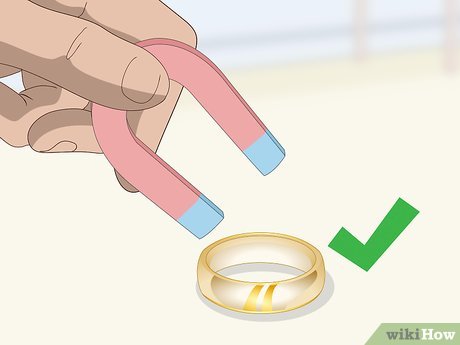The Ultimate Guide to Testing Gold at Home
This article serves as a comprehensive guide for individuals who want to test the purity of gold in the comfort of their homes.

Introduction to Testing Gold at Home
Testing gold at home can be a convenient and cost-effective way to ensure the authenticity of your gold jewelry or coins. With the right tools and knowledge, you can confidently determine if your gold is real or fake. The process of testing gold at home involves using different techniques, such as acid testing, magnet testing, and electronic testing. Each method has its advantages and disadvantages, but they all serve the same purpose of verifying the purity of gold.
Before testing your gold, it's essential to understand the gold karat system, which measures the amount of pure gold in a piece of jewelry or coin. Pure gold is 24 karats, while 18 karat gold contains 75% pure gold, and 14 karat gold contains 58.3% pure gold. Knowing the karat of your gold will help you select the appropriate testing method and ensure accurate results.
In this article, we'll explore various testing methods for gold, along with their pros and cons, and provide you with step-by-step instructions on how to test gold at home. So, whether you're a novice or an experienced gold enthusiast, this ultimate guide to testing gold at home will equip you with the knowledge and tools to test your gold accurately and confidently.
Acid Testing: Step-by-Step Guide
Acid testing is a reliable method to test the purity of gold. You can perform this test at home with a few tools, including a testing stone, testing acids, and a gold testing kit. Follow these steps to perform an acid test:
1. Scratch the gold item on the testing stone to leave a visible mark.
2. Choose the appropriate acid from your testing kit depending on the karat of the gold.
3. Apply a drop of acid to the scratch mark.
4. Observe the reaction of the acid with the gold. If the acid dissolves the gold, it indicates that the gold is not pure. If there is no reaction, it indicates that the gold is pure.
5. Rinse the gold item thoroughly with water to remove the acid residue.
Remember to handle the acids with care and follow safety instructions provided in your testing kit. Acid testing is a quick and effective method to determine the purity of your gold items.

Using a Magnet to Test Gold: Pros and Cons
One of the most common methods of testing gold at home is by using a magnet. The principle is simple: gold is not magnetic, so if a piece of jewelry or a coin is attracted to a magnet, it is not pure gold. This test can be performed quickly and easily with any magnet you have at home.
Pros: The magnet test is simple and doesn't require any special equipment. It can be done quickly and can give you an idea of whether your gold is pure or not.
Cons: The magnet test is not foolproof. Some counterfeiters may use non-magnetic metals that resemble gold, such as brass or copper, which can pass the magnet test. Additionally, not all gold is pure; some may contain small amounts of other metals that are magnetic. Therefore, the magnet test should only be used as a preliminary test and not relied upon as the sole determining factor for the purity of your gold.

Electrical Conductivity Testing: What You Need to Know
One of the most accurate methods of testing the purity of gold is through electrical conductivity testing. This method uses an electronic device that tests the resistance of a metal to an electrical current.
Pure gold is an excellent conductor of electricity, while impure or alloyed gold will have a lower electrical conductivity. To conduct this test, you will need a special device called an electrical conductivity meter, which can be purchased online or from a jewelry supply store.
To perform the test, simply touch the meter's probe to the surface of the gold item you wish to test. The meter will provide a reading that indicates the electrical conductivity of the metal. If the reading is low, it may indicate that the gold is not pure or has been alloyed with other metals.
It's important to note that electrical conductivity testing cannot determine the exact purity of gold, but it can provide a good indication. It is always best to use multiple testing methods to confirm the purity of your gold.
Ultrasonic Testing: How it Works and Its Limitations
Ultrasonic testing is a non-destructive technique that uses high-frequency sound waves to detect any defects or inconsistencies in a metal object, such as gold. The sound waves are sent through the object, and any changes in the waves' speed or direction can indicate the presence of cracks, voids, or other flaws.
While ultrasonic testing can be a useful tool for testing gold, it does have some limitations. For example, it may not be able to detect very small defects, and it may not be suitable for use on certain types of gold, such as those with a rough surface. Additionally, it requires specialized equipment and expertise to perform, which may not be available to the average person testing gold at home.
Gold IRA: Should You Open One To Save For Retirement?

